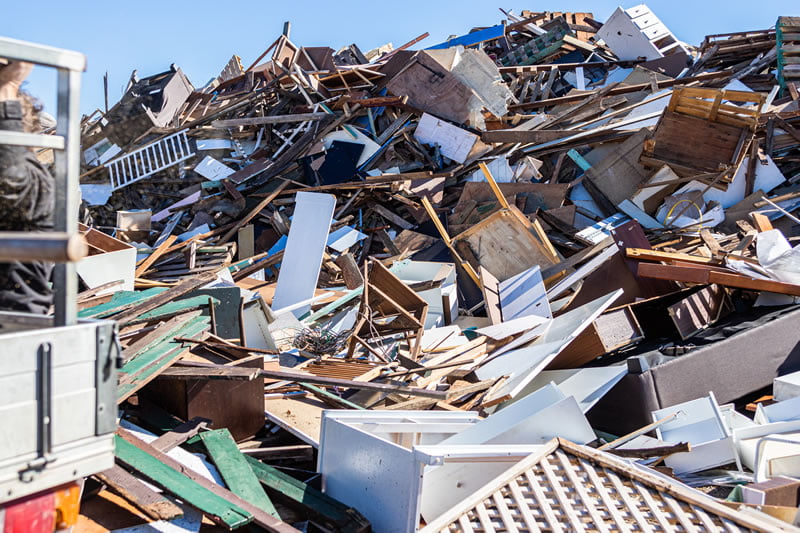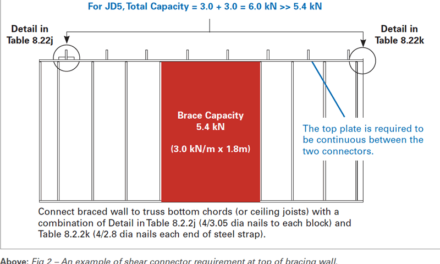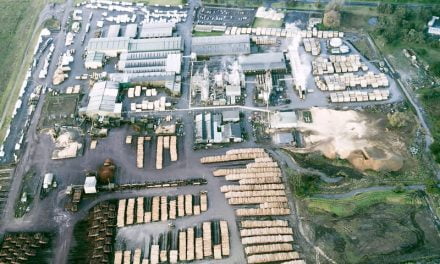Sustainability is a key selling point of timber, but we’re failing to make our case to some parts of the market and, in some areas, we’re also failing to meet our own standards.
Economists and engineers often pretend we live in a rational world. We don’t. If you want a detailed theoretical explanation of this, I recommend the works of Daniel Kahneman and Amos Tversky. But for a quick example, I have three places within 3km of my home where I can freely recycle all the leftover fabrics from my various crafts. The only nearby options for leftover framing timber are paid landfill or trying to give it away on Gumtree.
Any objective assessment would put a higher value on timbers that can build a house that will last decades than on scraps of linen and wool only suitable for dolls’ clothes. But our current system doesn’t.
For all that the industry rightly trumpets sustainability as a major market plus for timber, we too often fall down when it comes to the end of product life. There are good systems for re-use and recycling for high-value hardwoods and EWP, but for the standard light timber framing used across Australia, there’s no real incentive for recycling once the product goes into a building. The new product is priced too competitively and recycling requires extra labour costs in nail removal and so on.
Recently, this has led to an attack on treated timber in some parts of the construction industry media, with claims treated timbers represent a time bomb for landfill in 20-40 years.
While several of these claims are based on a fundamental misunderstanding of some of the issues (see H2F treated framing: Disposing of a myth), the underlying argument is valid: we do need better waste process management within the timber construction industry.
Piece by piece
While we talk about construction timbers as a single class, there are dramatic distinctions within it. Most mass timber elements are designed to be part of the circular economy – a concept that focuses on reusing materials rather than endless new product inputs into the system. Hardwoods are already highly reused: low supply means many species carry a price premium – more so for historic timbers reclaimed from warehouses, wharfs, etc. – that makes the refinishing work needed economical.
Light framing timbers, however, aren’t recycled at the same levels, regardless of whether or not they’ve been treated. There is a degree of re-use, but it’s mostly in products like pallets or crushed for use in particle board. Some is burned for energy in specialist burners.
“One of the biggest things stopping us is transport,” says Nick Livanes, business development manager at Koppers Performance Chemicals. “I used to live near Kimbriki tip in Sydney’s Northern Beaches. They do a lot of recycling. If they get good timber, they resell it, and it goes for good prices. Officially, it’s not a tip, it’s a Resource Recovery Centre. The concrete goes in one place, the steel in another, good timbers in another, etc. That’s great if you live near Kimbriki. But the average builder is running a business and he just wants to get rid of this stuff as quickly and as cheaply as he can. We don’t make it easy for him.”
While we’re nowhere near sorting the transport problem, it is at least on the radar. Waste specialist researchers like UNSW’s Professor Veena Sahajwalla are pushing for highly distributed recycling happening at the local community level. Her work focuses on e-waste and plastics, but the idea of local resource recovery facilities directly transfers to other materials.
The other half of the issue is more complex: our regulatory environment hasn’t kept pace with the changes in timber treatment and so the rules around disposal are less pragmatic than they ought to be.
“Disposing of treated timbers is highly regulated,” says Livanes. “While it varies state-by-state, generally there are strict rules about how it’s treated as a waste product or resold, and they’re as restrictive for the insecticides used in H2F blue timber as for CCA-treated products. Speaking broadly, nobody’s giving us credit for the fact the industry has dramatically improved the chemicals and processes used.”
Livanes points out that companies like Koppers and Lonza Wood Protection have invested heavily in lowering the amount and toxicity of chemicals in treated timber, making their manufacture and the end products safer over recent decades.
Troy Justice, marketing manager Australia for Lonza, agrees: “The actives used in H2F treated timber products have been selected for their ability to provide long-term insecticide protection to the frame and are registered for and commonly used within agricultural, veterinary and household products, including fly spray,” he says
“Their long-standing existing use in food crops, their low toxicity to humans and capacity to break down on exposure to the environment provide a better alternative to other regulated pesticides and have all been key drivers in the use of these actives.”
But regulations say the same chemical that’s acceptable for use in an orchard when being sprayed by a farmer requires careful disposal when applied to timber, banning possible uses as mulch or compost.
Keeping Australia building
Historically, house frames were made of tough local hardwoods that were naturally highly durable. Many of these houses are still standing. Softwoods, particularly Oregon and Douglas fir, became popular in the early 20th century, then pine in the second half of the century. From the 1930s onwards, chemical treatments were used to prevent termite and borer attack, which was a risk across most of the mainland.
Steel got a foothold in the housing market mid-last century. It wasn’t cheap, but it was strong and could make claims that it was resistant to insect and rot attack with no need for treatments (then often arsenic). It was a powerful argument, and the timber industry lost a lot of market share.
“Timber’s response was H2F envelope treatments,” says Livanes. “Small amounts of chemicals that break down on soil contact and will, when properly used, protect your house frame. Ideally, they’re used in conjunction with barrier treatments that also protect things like skirting boards and furniture, but those require regular inspections that aren’t always kept up. Envelope treatments give the frame set and forget protection regardless.”
With termite risk expanding annually across the country, H2F framing gave the industry an affordable and reliable way to take back market share and has long provided homeowners with peace of mind.
Industry innovation didn’t stop there: recent advances include MicroPro from Koppers and Roundwood Solutions’ Tanapost, based on processes developed by Lonza. Both are designed to replace CCA-treated product and have had success with organic farmers and wine growers.
Livanes says, “We’ve seen our customers really succeed with MicroPro because the retailers and consumers appreciate its independent environmental and health certifications, but it’s also caught up in the one-size-fits-all disposal regulations.”
Industry-wide, we’re left with a general awareness of the problems around housing timbers at end of life, but no real trigger for managing them. Construction growth is a vital economic driver, supply hasn’t fallen over yet, and carbon isn’t costed in our current economy. So nothing is pushing change.
This status quo is unlikely to last. As pricing carbon becomes more common around the world, timber supplies tighter and landfill more expensive, things could quickly change. We already have the know-how and technology, now we just need the will to re-use, recycle, compost and use scrap for local energy production. It’s a future that’s genuinely rational.
For more, visit www.kopperspc.com.au, www.lonzawoodprotection.com/apac/ and www.tpaa.colm.au. For an accessible insight into Kahneman and Tversky, see The Undoing Project: A Friendship That Changed Our Minds, by Michael Lewis.











